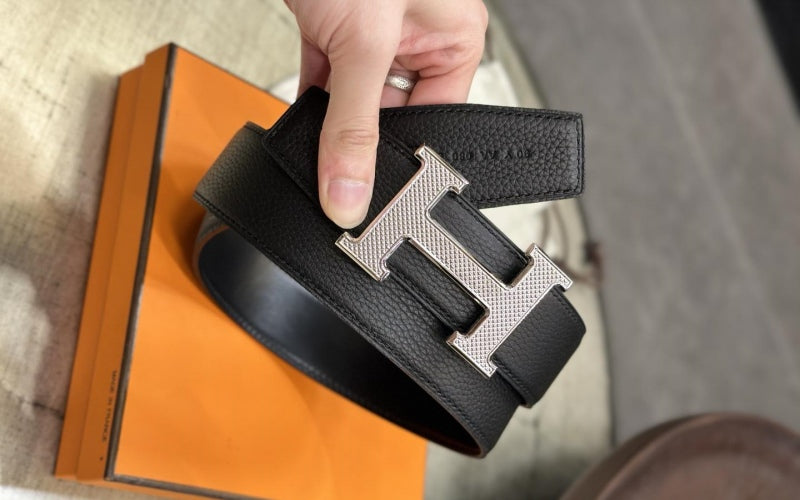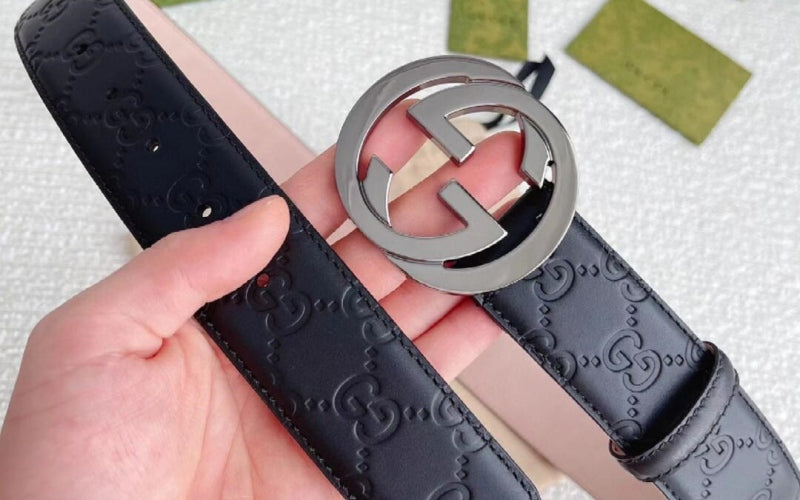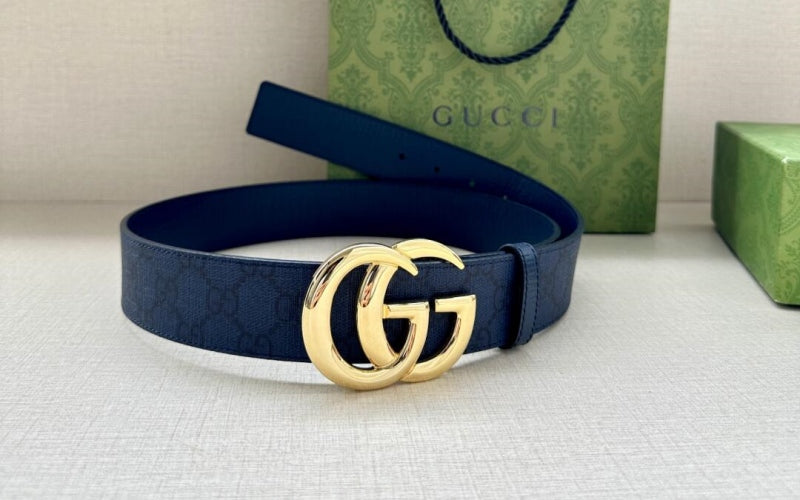
Do Expensive Belts Last Longer Than Leather Belts? (Spoiler: It Depends)
Let’s tackle a question that’s been plaguing belt shoppers since the invention of credit card debt: “Does shelling out extra cash for a ‘luxury’ belt actually make it last longer, or am I just paying for the brand name?”
Short answer: Sometimes.
Long answer: Stick around, because we’re diving into the tangled world of belt economics, material science, and why some “expensive” belts crumble faster than a cookie in milk while others outlive your gym membership.

Want a leather belt that’ll outlast your jeans? Click here.
1. The Great Belt Debate: Price vs. Longevity
First, let’s clarify the confusion baked into the question: “Leather belts” aren’t a monolith. A $20 “genuine leather” belt from a fast-fashion store and a $300 full-grain leather belt from a heritage brand might both technically be “leather,” but they’re as different as a tricycle and a Tesla.
Key Takeaway:
-
Expensive ≠ Durable: A high price tag can mean better materials and craftsmanship… but not always.
-
Leather ≠ Leather: The type of leather (full-grain vs. bonded), tanning methods, and hardware quality matter more than the price alone.
Beltley’s Mantra: We’re here to help you spot the difference between luxury and marketing.

Want a leather belt that’ll outlast your jeans? Click here.
2. The Anatomy of a Belt: What Actually Makes It Last?
A belt’s lifespan hinges on three pillars:
A. The Leather
-
Full-Grain: The top layer of the hide, untouched. Dense fibers, natural oils, ages beautifully. Lifespan: 15–30+ years.
-
Top-Grain: Sanded to remove imperfections. Thinner, less durable. Lifespan: 5–10 years.
-
Genuine Leather: Scraps glued together. Prone to peeling. Lifespan: 1–3 years.
-
Bonded/“Vegan” Leather: Plastic-coated nonsense. Lifespan: 6–12 months.
Pro Tip: If the belt feels like a plastic wallet, it’s not going the distance.
B. The Hardware
-
Solid Brass Buckles: Heavy, tarnish-resistant, immortal.
-
Plated/Zinc Buckles: Lightweight, prone to chipping.
-
Stitching: Hand-stitched > machine-stitched.
Beltley’s Secret: Our buckles weigh as much as your regrets after impulse-buying a cheap belt.
C. The Craftsmanship
-
Hand-Cut Edges: Smooth, burnished, won’t fray.
-
Reinforced Holes: Brass eyelets prevent stretching.
-
Tanning Method: Vegetable-tanned leather > chrome-tanned (eco-friendly and durable).

Want a leather belt that’ll outlast your jeans? Click here.
3. The Price Tag Illusion: When “Expensive” Doesn’t Mean “Better”
Let’s expose the dark side of luxury fashion:
A. The “Designer Tax” Phenomenon
-
Example: A $500 designer belt made with coated genuine leather.
-
Cost to Produce: $30.
-
Why It Fails: The plastic coating cracks, the “leather” peels, and you’re left with a $500 paperweight.
B. Fast Fashion’s Dirty Secret
-
Example: A $50 “Italian Leather” belt from a trendy retailer.
-
Reality: It’s thin, chrome-tanned, and held together with hope. Dies after 18 months.
C. The Beltley Difference
-
Price: $150–$250.
-
Value: Full-grain Italian leather, vegetable-tanned, hand-stitched, solid brass hardware.
-
Lifespan: 20+ years. Cost per year: $7.50.
Moral: You’re not paying for a logo. You’re paying for decades of service.

Want a leather belt that’ll outlast your jeans? Click here.
4. Case Study: The $20 vs. $200 Belt Showdown
Let’s compare two leather belts over 5 years:
|
Metric |
$20 “Genuine Leather” Belt |
$200 Full-Grain Belt (Beltley) |
|
Year 1 |
Looks decent; slight fading. |
Develops a subtle patina. |
|
Year 2 |
Edges fray; coating peels. |
Softens; molds to your waist. |
|
Year 3 |
Buckle tarnishes; holes stretch. |
Looks better than ever. |
|
Year 4 |
Retired to the junk drawer. |
Becomes a wardrobe staple. |
|
Year 5 |
Landfill-bound. |
Still going strong. |
|
Total Cost/Year |
$20/year |
$40/year |
Verdict: The $200 belt costs half as much per year and doesn’t trash the planet.

Want a leather belt that’ll outlast your jeans? Click here.
5. 5 Signs an “Expensive” Belt Is Worth the Money
Not all pricey belts are created equal. Here’s how to spot the real deal:
-
Full-Grain Leather: Check for natural grain patterns (no plastic coating).
-
Solid Hardware: The buckle should feel heavy, not hollow.
-
Hand Stitching: Look for slight irregularities (proof of human craftsmanship).
-
Reinforced Holes: Metal eyelets or double stitching around holes.
-
Brand Transparency: Clear info on tannery sources and production methods.
Beltley’s Telltale Signs: Our belts come with a “birth certificate” detailing the leather’s origin and tanning process.

Want a leather belt that’ll outlast your jeans? Click here.
6. The Fast Fashion Trap: Why Cheap Belts Cost You More
That $30 belt isn’t a bargain—it’s a scam. Here’s why:
-
Environmental Cost: Synthetic belts take 500+ years to decompose.
-
Hidden Fees: Replacing cheap belts every year adds up ($30 x 10 years = $300).
-
Health Risks: Chrome-tanned leather can leak toxins (yikes).
Beltley’s Eco-Stance: Our vegetable-tanned leather is biodegradable and non-toxic.

Want a leather belt that’ll outlast your jeans? Click here.
7. How to Make Any Belt Last Longer (Even the Cheap Ones)
Got a belt you love? Extend its life with these hacks:
A. Condition It
-
Frequency: Every 6 months.
-
Product: Use a pH-balanced leather conditioner (Beltley’s works on all leather types).
B. Rotate Your Belts
-
Why: Gives fibers time to recover.
-
Ideal Rotation: 3 belts for daily wear.
C. Store Properly
-
Don’t: Crumple in a drawer.
-
Do: Hang or coil loosely.
D. Avoid Water
-
If Wet: Blot dry, stuff with newspaper, and air-dry.
Note: These tips add 2–3 years to cheap belts… but they’ll still die young.

Want a leather belt that’ll outlast your jeans? Click here.
8. FAQs: Your Burning Questions, Answered
Q: Is a Gucci belt better than a regular leather belt?
A: If it’s made with full-grain leather, yes. But many designer belts use coated leather that peels. Check the specs!
Q: Can a belt last a lifetime?
A: Yes—if it’s full-grain, hand-stitched, and cared for. Beltley’s belts come with a lifetime warranty.
Q: Why do some expensive belts crack?
A: They’re often coated with plastic (to hide low-quality leather). Moisture seeps under the coating, causing cracks.
Q: Are vegan leather belts durable?
A: Most are plastic (PU), which cracks in 1–2 years. For true sustainability, choose vegetable-tanned full-grain leather.
Q: How do I know if I’m overpaying for a belt?
A: If the brand doesn’t disclose leather type/tannery, you’re paying for hype.

Want a leather belt that’ll outlast your jeans? Click here.
9. The Beltley Promise: Luxury Without the Lies
At Beltley, we’re obsessed with honest craftsmanship:
-
Full-Grain Italian Leather: No coatings, no shortcuts.
-
Vegetable Tanning: Eco-friendly and durable.
-
Solid Brass Hardware: Built to survive weddings, workouts, and zombie apocalypses.
-
Lifetime Warranty: If we fail, we fix it. No fine print.
Translation: We make belts your grandkids will fight over.
Final Words
Expensive Belts Can Last Longer… If You Know What to Buy
The truth? A well-made belt—whether it costs $150 or $500—will outlive cheap alternatives. But the key isn’t the price tag; it’s the material quality, craftsmanship, and care.
Don’t fall for marketing fluff. Look for full-grain leather, solid hardware, and brands that treat you like a human, not a wallet.
And if you’re ready to invest in a belt that’s actually built to last? Explore Beltley’s Collection—where luxury meets integrity, and your belt’s lifespan is measured in decades, not disappointments.
PS: Beltley belts come with a lifetime craftsmanship guarantee. Because we’d rather earn your loyalty than your one-time payment.

